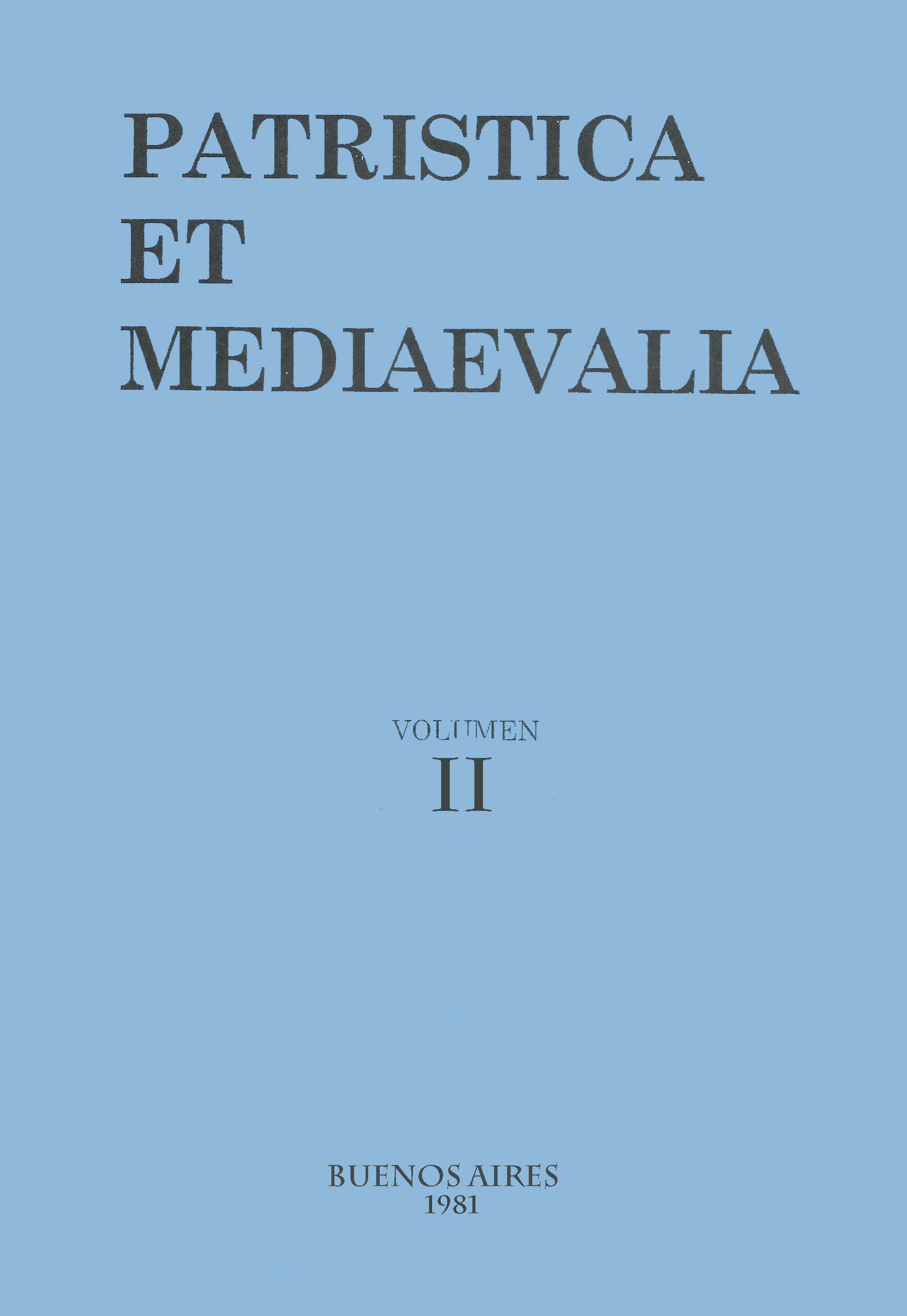Justicia y verdad en San Anselmo: el capítulo 12 del "De veritate"
Resumen
El presente artículo trata de demostrar que un análisis detallado del capítulo 12 del De Veritate, que lo sitúa en su contexto cercano y lejano, no revela el menor rastro de formalismo ético. A través de un movimiento dialéctico, Anselmo logra establecer que la rectitudo no puede ser reducida a debitum, sino que ese debitum, aunque supuesto y asumido, es superado por el amor al bien por sí mismo (propter se). En esto consiste la justicia de Anselmo. Esta conclusión central es una condición indispensable para comprender las otras dos obras que completan el magnífico "tríptico" moral del Doctor: De libertate arbitrii y De casu diaboli.Descargas
Citas
Briancesco, E. (1978). ¿Cómo interpretar la moral de San Anselmo? Revista Latinoamericana de Filosofía, 4(2), 119-140.
Henry, D. P. (1967). The Logic of Saint Anselm. Cambridge: Oxford Clarendon Press.
Flasch, K. (1965). Zum Begriff der Wahrheit bei Anselm von Canterbury. Philosophisches Jahrbuch, 322-352.
Flasch, K. (1970). Der philosophische Ansatz des Anselm von Canterbury im Monologen und sein Verhältnis zum augustirischen Neuplatonismus. Analecta Anselmiana, II, 1-44.
Pouchet, R. (1964). La rectitudo chez saint Anselme. Paris: Etudes augustiniennes.
Rohmer, J. (1939). La finalité morale chez les théologiens de saint Augustin à Duns Scot (Etudes de Philosophie Médiévale, 27). Paris: Vrin.
Urs von Balthasar, H. (1968). La gloire et la croix, t. II, part. 1. Paris: Aubier.
Vanni-Rovighi, S. (1969). L’etica di S. Anselmo. Analecta Anselmiana, I, 73-100.
1. Los/as autores/as que publiquen en esta revista aceptan las siguientes condiciones:
-
Conservan los derechos de autor/a y ceden a la revista el derecho de la primera publicación, con el trabajo registrado con Licencia Atribución-CompartirIgual 4.0 Internacional, que permite a terceros utilizar lo publicado siempre que mencionen la autoría del trabajo y a la primera publicación en esta revista.
-
Pueden realizar otros acuerdos contractuales independientes y adicionales para la distribución no exclusiva de la versión del artículo publicado en esta revista (p. ej., incluirlo en un repositorio institucional o publicarlo en un libro) siempre que indiquen claramente que el trabajo se publicó por primera vez en esta revista.
-
Tienen permitido y se les recomienda publicar su trabajo en Internet (por ejemplo en páginas institucionales o personales).
2. Condiciones de auto-archivo. Se permite y se anima a los/as autores/as a difundir electrónicas la versión post-print de sus obras ya que favorece su circulación y difusión y con ello un posible aumento en su citación y alcance entre la comunidad académica. Color RoMEO: azul.













